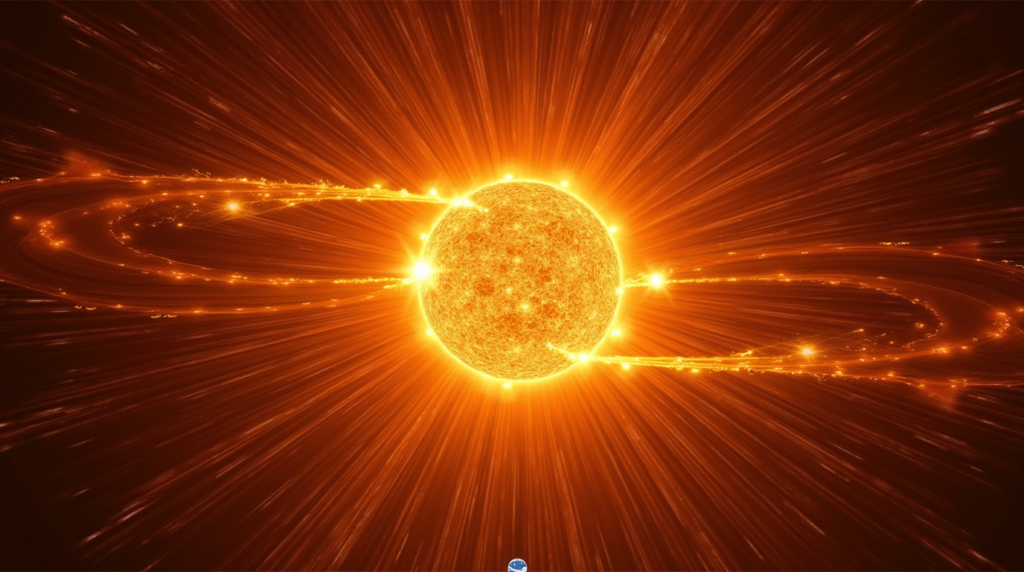The Magnetic Corona: Why It Matters
The Sun’s corona, its tenuous outer atmosphere, crackles with magnetic energy. This magnetic field in the corona is the engine of solar storms like flares and coronal mass ejections. When these eruptions blast off the Sun, they can trigger geomagnetic disturbances at Earth, knocking out satellites or power grids. Yet for decades, scientists struggled to observe the corona’s magnetic field in detail. They could routinely map magnetism on the Sun’s visible surface, the photosphere. But the corona’s faint light made its magnetic structure elusive. Without regular data on the Sun’s magnetic halo, understanding and predicting solar eruptions remained frustratingly out of reach.
A Small Telescope with Big Ambitions
That is beginning to change on a Hawaiian mountaintop. High on Hawaii’s Mauna Loa, a new instrument is charting the Sun’s magnetic atmosphere like never before. The Upgraded Coronal Multi-channel Polarimeter (UCoMP) at NCAR’s Mauna Loa Solar Observatory is a modest 20-centimeter coronagraph. Essentially, it works like an artificial eclipse. A small disk inside the telescope blocks the Sun’s blinding face to reveal the faint corona around it. Despite its compact size, UCoMP’s advanced design lets it capture the whole Sun’s corona in one view. Over an eight-month campaign, it recorded magnetic maps of the corona almost every other day. Using a technique called coronal seismology, researchers tracked subtle waves rippling through the Sun’s hot plasma. From those signals, they inferred the strength and direction of the corona’s magnetic field across the globe. In total, UCoMP produced 114 global magnetograms – a nearly continuous movie of the Sun’s magnetic outer atmosphere. This was the first time scientists could watch the daily evolution of the corona’s magnetism on a global scale.
International Collaboration and Complementary Instruments
The UCoMP breakthrough is the result of an international collaboration spanning multiple continents. Solar physicists from China, the United Kingdom, and the United States joined forces to make it possible. The project brought together expertise from Peking University, Northumbria University, the University of Michigan, and NCAR in Colorado. Crucially, NCAR developed the UCoMP instrument with support from the U.S. National Science Foundation. Now this telescope provides data to researchers worldwide. Other cutting-edge solar observatories provide complementary perspectives on the Sun. For example, the Daniel K. Inouye Solar Telescope (DKIST) in Hawaii is the world’s largest solar telescope. It can zoom in on small regions of the corona with stunning detail. DKIST recently demonstrated unprecedented measurements of coronal magnetic fields in active regions. However, even a 4-meter telescope like DKIST cannot capture the Sun’s entire atmosphere at once. That is where UCoMP excels: its wider field of view delivers the big picture, albeit at lower resolution. Together, instruments like DKIST and UCoMP give scientists both close-up details and global context. This combination is essential for fully understanding our star’s behavior.
Toward Better Space Weather Forecasts
Routinely mapping the Sun’s magnetic corona opens the door to more reliable space weather forecasts. With near-daily maps of the entire corona, scientists can observe how magnetic energy builds up day by day. They can identify areas of mounting tension before a solar eruption occurs. Early results from UCoMP even yielded magnetic readings at the Sun’s poles. These polar regions are normally out of sight from Earth’s vantage point. As the Sun approaches its peak activity in the solar cycle, such polar data help complete the global magnetic map. All this information feeds into computer models that simulate the Sun’s atmosphere and predict eruptions. If scientists know the corona’s magnetic configuration today, they can better anticipate what explosive events might occur tomorrow. The ultimate goal is to give advanced warning of solar storms that could disrupt communications, navigation, and electrical grids. While true “Sun weather” forecasts are still in development, UCoMP’s observations are a crucial step toward that reality.
A Turning Point in Solar Physics
This achievement marks a turning point for solar physics. Researchers are now routinely observing a part of the Sun that was until recently largely invisible. Zihao Yang, the lead scientist behind the UCoMP study, calls it “a new era of solar physics research.” For the first time, scientists can watch the coronal magnetic field change day by day. The near-continuous view is already filling in missing pieces of the Sun’s magnetic puzzle. Scientists plan to integrate UCoMP’s data with other techniques. The aim is to build a three-dimensional picture of the Sun’s magnetic environment. Plans are already underway for a next-generation instrument called the Coronal Solar Magnetism Observatory (COSMO). This much larger coronagraph would capture the corona’s magnetic field in far greater detail and even in full 3D. For now, UCoMP’s successful run demonstrates what is possible. It shows that with creativity and collaboration, humanity can finally monitor the Sun’s magnetic “weather” in real time. Our modern world is increasingly reliant on technology that is vulnerable to the Sun’s outbursts. Having this new monitoring capability comes not a moment too soon.




